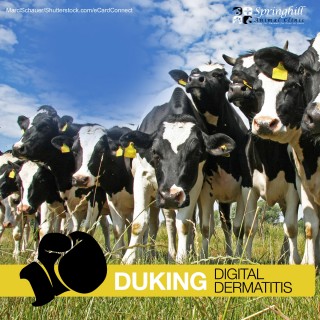What was once thought to only be an issue in European dairy cattle has had an increased prevalence in American feedlot beef cattle in recent years. Digital dermatitis (DD) is known by a number of names, including footwarts, hairy heel warts, strawberry foot or raspberry heel. While several of the names sound harmless, the condition can bring about severe discomfort and lameness in the animal.
A strawberry-like lesion featuring erect hairs on the border of the skin and horn between the bulbs of the heels is the classic symptom. The lesions can occur anywhere else on the coronary band and between the claws, giving off a smell and causing pain when pressure is applied.
Cattle will change their posture and gait to avoid contact between the lesions and the floor or other surfaces, one of the earliest visual signs of DD. This change in posture or gait can lead to abnormal wear of the hoof on the affected claws.
Digital dermatitis most often occurs in the winter due to the increased contact with slurry, but can occur year-round.
Ways to prevent digital dermatitis in your herd include:
– Maintaining proper hygiene in cubicles and passageways by scraping them at least twice a day.
– Disinfect foot trimming equipment after every use to prevent spreading the infection.
– Avoid buying in and hiring cattle. If necessary, quarantine those cattle for a month, or trim, clean and treat the feet with antibiotic solution for three consecutive days.
– Use footbaths made up to half the strength.
– Keep tracks and walkways comfortable to prevent trauma to the skin and hooves.
If digital dermatitis does appear in your herd, treatment options include topical sprays and walk-through foot baths. We can provide further evaluation and treatment options for you.

